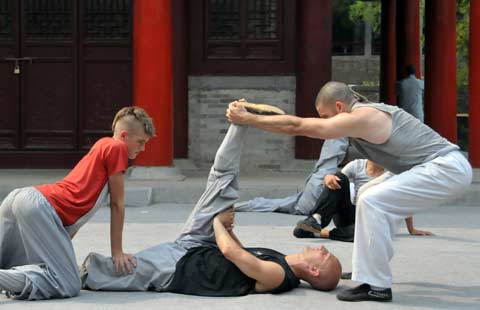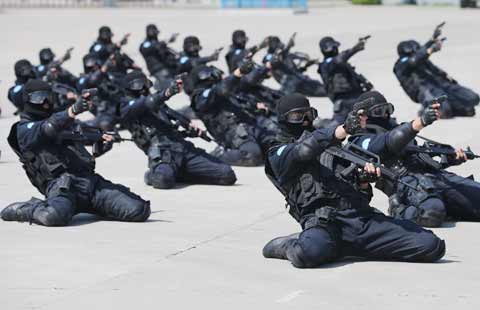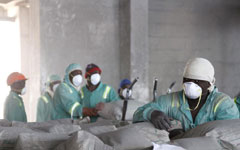Cementing a solid future in Nigeria and beyond
Updated: 2014-07-28 06:58
By Li Lianxing (China Daily)
|
|||||||||||
The average capacity of its lines has been more than 4,000 tons a day.
The company is currently involved in seven African countries, and the extent of its global operations now positions it in the world's top 10 cement producers, alongside Lafarge, Holcim of Switzerland, Heidelberg of Germany and Italcementi of Italy.
Lafarge is now considered one of the Chinese company's main global strategic partners, and both have collaborated on many projects across the world.
|
 |
"We were the engineering, procurement and construction contractor and built that factory according to Lafarge's requirement. When I went back to the project this year, I was so surprised by the business, and to see how many huge vehicles were waiting outside the factory for cement even though it had no stock," he says.
World production has now hit three billion tons a year, almost half of which comes from China. The same share comes from Chinese-built production plants around the globe.
Over the past decade Nigeria has turned itself from a cement importer into a self-sufficient producer.
In 2004, the country's cement demand was about 10 million tons a year, while it could only produce 3 million tons. Today its annual production has surpassed 28 million tons and its capacity is still growing to cope with increased demand.
A large share of CBMI's business is completed through joint ventures, and as a result its expansion in Africa has been easier than for most other foreign companies, Ren says.
"The most difficult part for us is often negotiating and finalizing details with our partners, on who provides design, evaluation, planning and construction, for instance," Ren says.
To help establish its role in the process, CBMI incorporated the Tianjin Cement Industry Design and Research Institute into its organization in 2012, to strengthen its research capability.
"Added to our existing construction and installment capacity, that mix of skills is now one of the best in the industry," Ren says.
Related Stories
China UnionPay issues 1st credit card in Africa 2014-07-18 10:47
Chinese wheels really start rolling in East Africa 2014-07-15 06:57
South Africa is next stop for train builder 2014-07-01 07:38
Chinese cotton firm harvests a bumper crop in Africa 2014-06-30 07:02
Zambia poised for increased Chinese investment 2014-06-20 10:04
Chinese firm's towering ambitions in Africa 2014-06-20 09:38
Today's Top News
Developers placing bets on casinos overseas
Scrutiny on iPhone data access
Russian fighter jet crash kills pilot
US-Russia relations frosty
Harsher safety measures urged amid scandal
Drills to have 'little impact' on civilian air services
Revision of decree protects military airports
Experts slam Japan's bid to break order
Hot Topics
Lunar probe , China growth forecasts, Emission rules get tougher, China seen through 'colored lens', International board,
Editor's Picks

|

|

|

|

|

|






